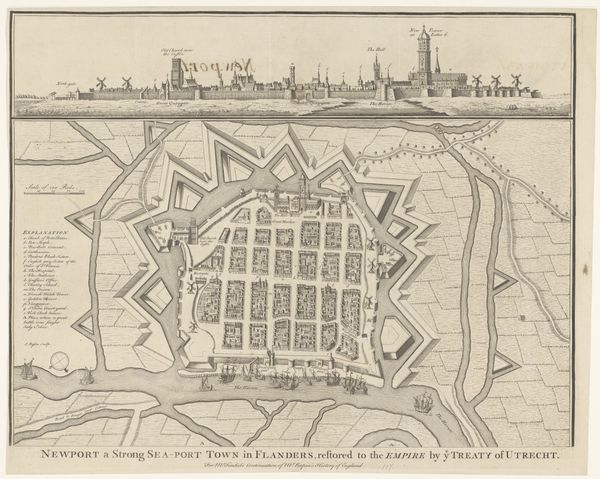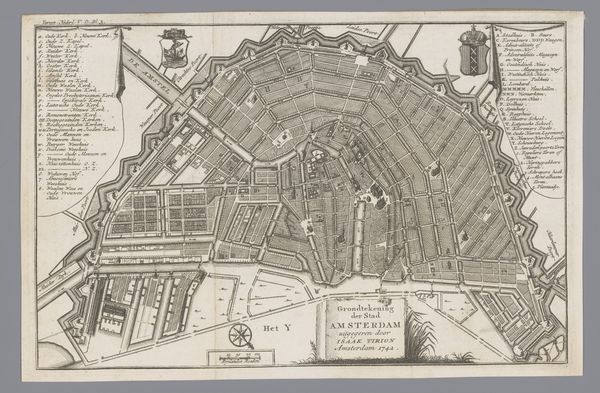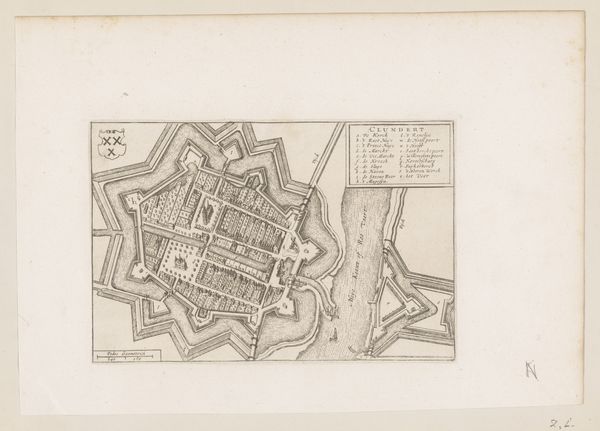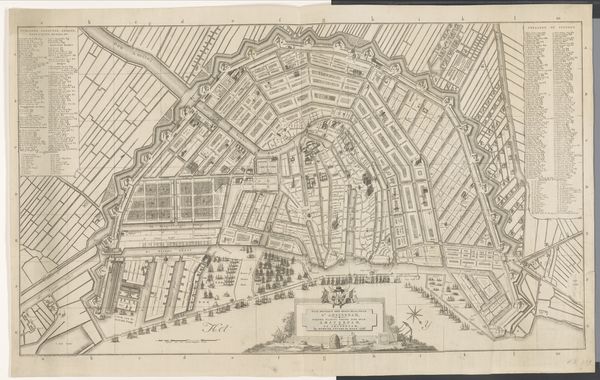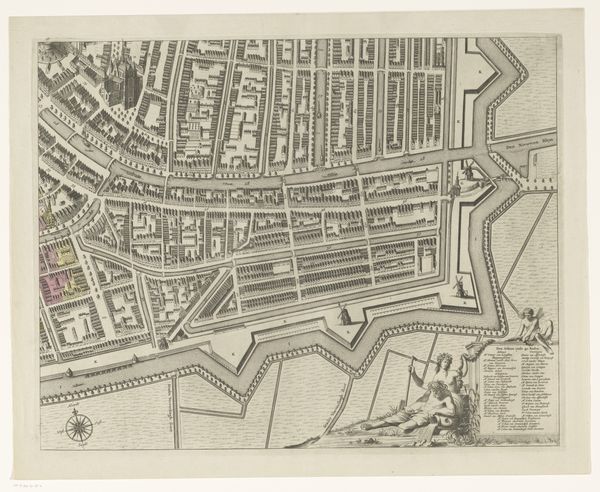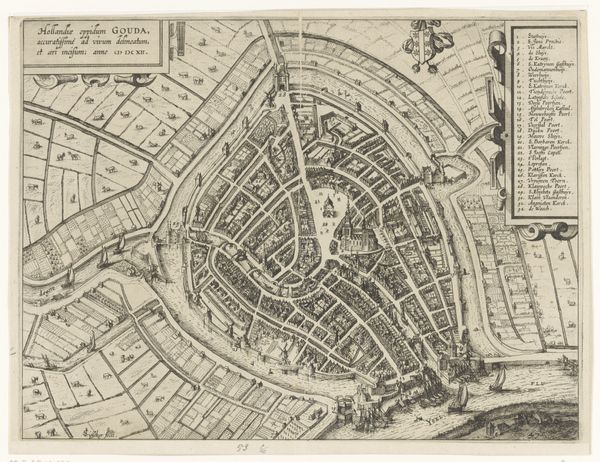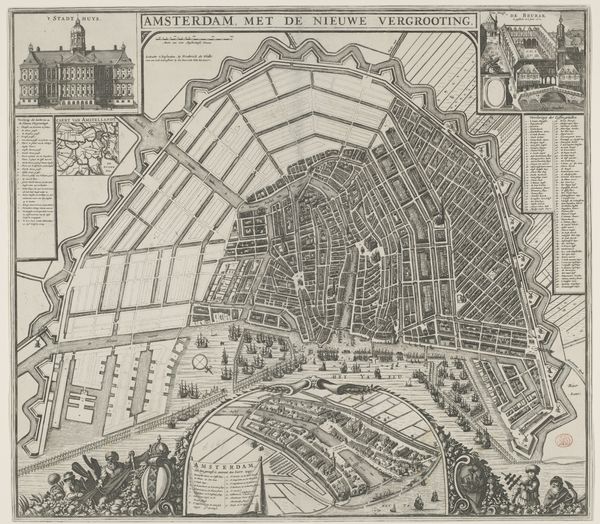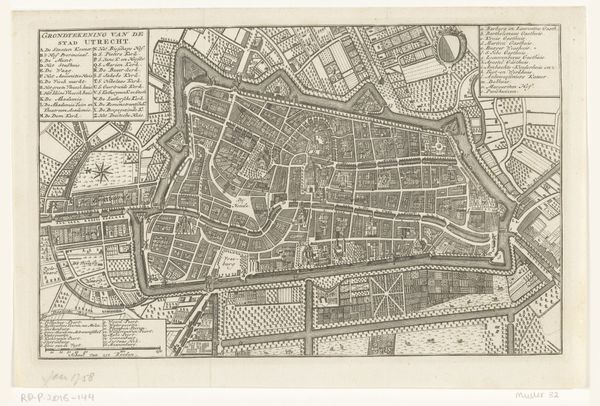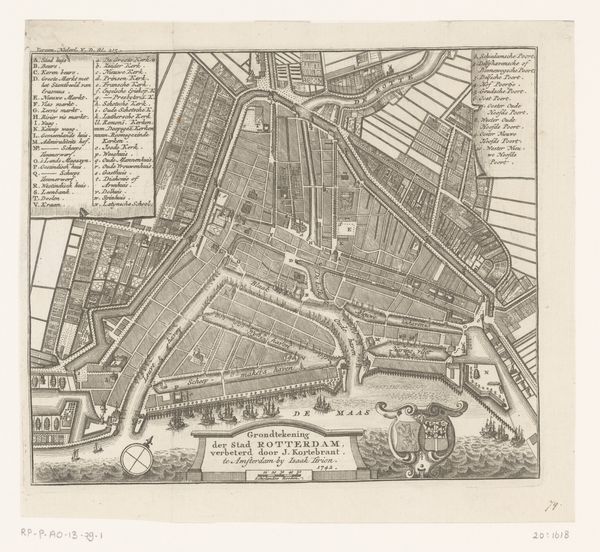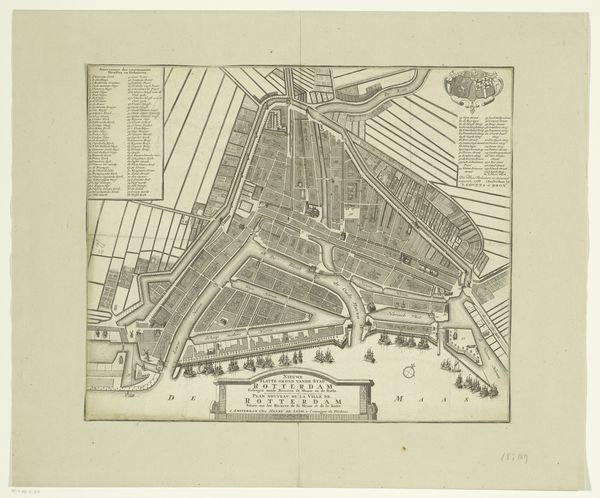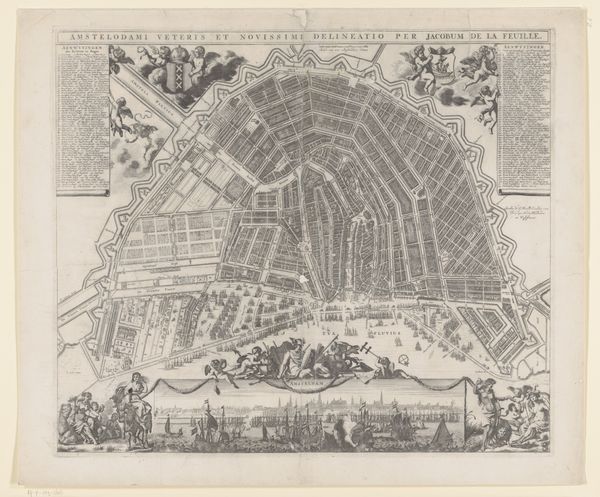
Dimensions: height 463 mm, width 673 mm, height 527 mm, width 741 mm
Copyright: Rijks Museum: Open Domain
Curator: This meticulously detailed engraving, titled "Plattegrond van Amsterdam," was crafted by Caspar Jacobsz. Philips sometime between 1766 and 1785. Look at how systematically Amsterdam is laid out. Editor: The city looks so geometric and planned from above. All those tiny lines… there's something strangely compelling about it, though almost sterile, divorced from any sense of lived experience. Where are the people? Curator: Exactly! We need to consider that maps were far from objective documents. This particular image, rendered in ink on laid paper, presents Amsterdam as a potent, highly organized entity, projecting power and control. Look at the neat rows of canals and fortifications. Editor: Which conveniently leaves out the unhygienic parts, no doubt! But I'm interested in this display of Dutch mercantile strength through an ordered visual representation, reflecting both civic pride and a way of literally mapping social structures and hierarchies. This order comes at what cost? Curator: Absolutely. The detailed rendering style pulls us into the mindset of the city’s elite. A clear, legible layout was a symbol of administrative success and mercantile power. It presents Amsterdam not just as a city, but as a meticulously managed enterprise. Note, however, the artistic touches: a sailboat and the rich details of the coat of arms. Editor: Yes, this isn’t simply informational; it is about constructing an image. I’m particularly drawn to how the cityscape as a theme served these precise political ends. Who got to imagine and define this urban space? What implications did that have for inhabitants whose lives were more messy and less, uh, engraved? Curator: Those are key points to ponder. By emphasizing structure and order, the artwork also, as you point out, normalizes certain power dynamics and obscures marginalized histories. Editor: In any case, it's also undeniably an attractive piece of craftsmanship! Curator: Agreed. A testament to the artistry of mapmaking and its important socio-political role, back then and in how we see these cities even now. Editor: Precisely, understanding how these images shaped perceptions remains vitally important.
Comments
No comments
Be the first to comment and join the conversation on the ultimate creative platform.

